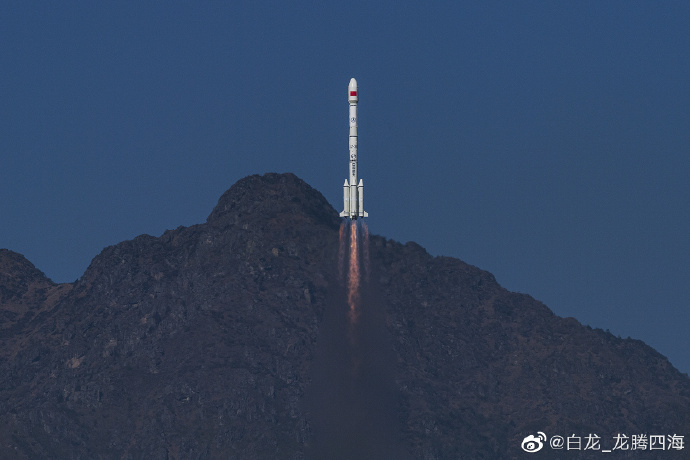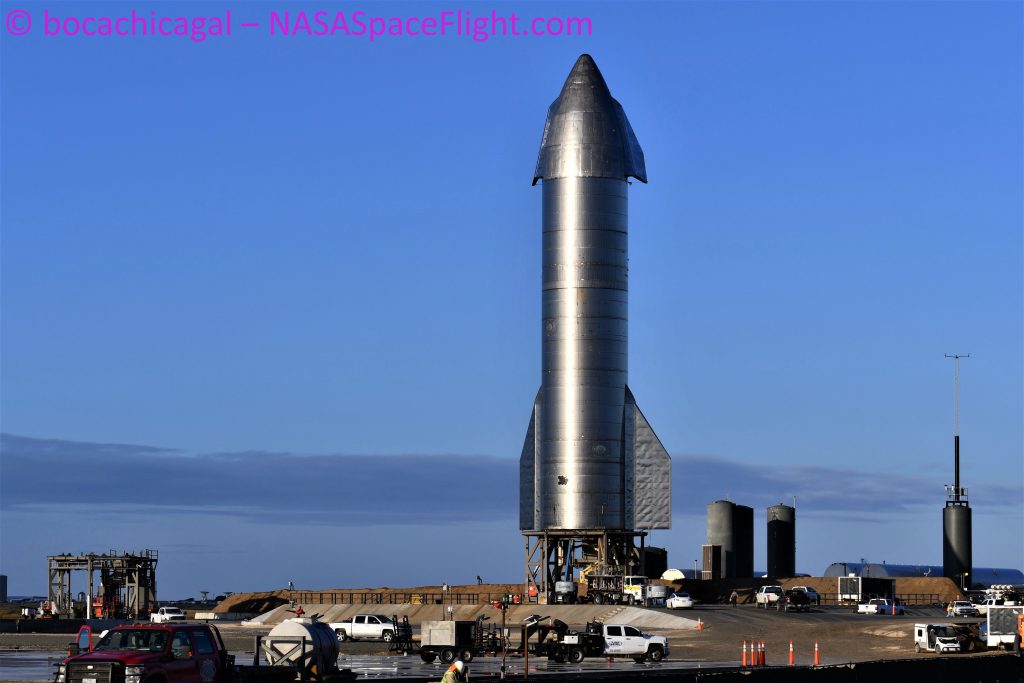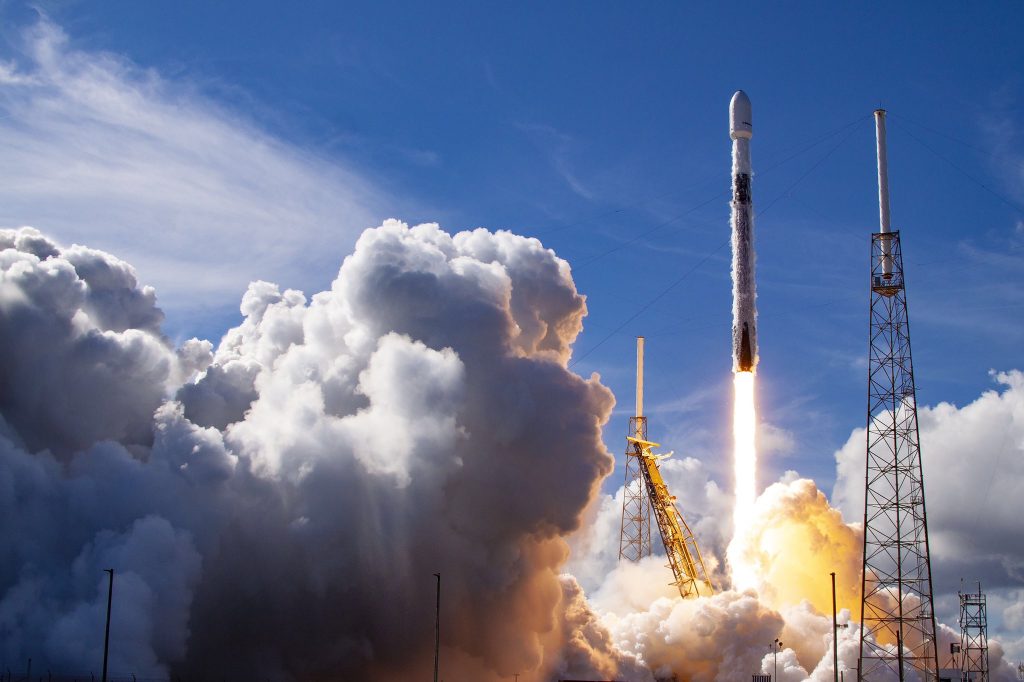Media
Summary
Join us for this week’s Rocket Roundup with host Annie Wilson as we look back at the launches that happened from the past week, including a Chinese Long March 11, the SpaceX SN8 flight test, a ULA classified launch, a SpaceX Falcon 9, and a Russian Angara A5.
Transcript
Hello, and welcome to the Daily Space for today Wednesday, December 16th, 2020. I am your host Annie Wilson. Most weekdays we’re here putting science in your brain.
Usually, Wednesdays are for Rocket Roundup and today is no different, so let’s get to it, shall we?
First up, on December 9th at 20:14 UTC, a Long March 11 rocket took off from LC-4 at Xichang Satellite Launch Center in southwestern China.

Onboard were a pair of Gravitational Wave High-energy Electromagnetic Counterpart All-sky Monitor (GECAM) satellites. The satellites will situate themselves on opposite sides of the Earth and will work together like a pair of eyes to watch the entire sky. They’re looking for fluctuations in the gamma-ray bit of the electromagnetic spectrum and for charged particles.
Not a lot of objects give off light at these high energy wavelengths, and even fewer give off both light and particles. One of the few events to fit the bill is a kilonova – a flash of light and particles that occurs when two neutron stars merge. These events were identified for the first time thanks to their gravitational waves back in 2017. That initial discovery inspired the rapid-fire construction and launch of these twin spacecraft.
It usually takes years to design and construct a science mission, so this is remarkable. Since it’s not practical to identify the location of gamma rays or cosmic rays with a single detector, the twin spacecraft make things a bit easier. By looking at the difference in time between when each spacecraft detects light and particles, they can narrow down where in the sky a new merger has taken place.
This is a super cool new set of science missions, and we’re looking forward to seeing what all they discover.
Next up, on December 9th at 22:45 UTC, SpaceX did a suborbital test of their Starship at their compound at Boca Chica, Texas.

Starship SN8’s twelve and a half kilometer hop was successful, mostly. The shiny steel cylinder reached altitude and hung in the air on one engine for several moments. After the engine cut off, it looked like it was going to fall out of the sky, but instead, the craft initiated its flip-and-belly-flop maneuver. This was the first time this maneuver was demonstrated in a real vehicle. After a controlled glide back to Earth, the engines reignited and flipped the craft upright.
Unfortunately, the engines lost thrust, and SN8 hit the ground a little too fast and exploded – right in the center of the landing pad. The SpaceX live stream showed the smoking remains and signed off with “Awesome Test, congrats Starship team”. The whole flight lasted less than seven minutes.
Afterward, SpaceX CEO Elon Musk took to Twitter to explain: Fuel header tank pressure was low during landing burn, causing touchdown velocity to be high & RUD, but we got all the data we needed!
Bonus fact: The engine exhaust turned green shortly before the impact as a result of being fuel starved. The green color comes from the copper lining of the combustion chamber burning as a result of a lack of fuel.
Next up, on December 11 at 01:09 UTC, United Launch Alliance launched a Delta IV Heavy from SLC-37B at Cape Canaveral in Florida. The payload was classified.

This launch was originally supposed to take place back in July 2020 but was pushed to August 26th, 2020. It then suffered a further six scrubs/aborts because of Ground Support Equipment issues, with one attempt coming as close as T-7 seconds before aborting. After these aborts, ULA performed maintenance on the swing arm system at the launch pad. This took three months. Just in case, ULA also performed maintenance on the swing arm system at SLC-6, the west coast Delta 4 launchpad.
Even though the payload was classified, the mission patch was not. A lone wolf is front and center on snow-covered ground, howling at the sky. In the background, four other wolves stand in front of a mountain range under a snowy night sky. At the top of the patch is the name of the mission and launch location.
According to the National Reconnaissance Office: The wolf’s howl represents its capability to warn the pack as the first point of detection against threats.
The pack of five wolves is meant to represent “solidarity across the Five Eyes (FVEY) community.”
Next up, on December 13th at 17:30 UTC, SpaceX launched a Falcon 9 from SLC-40 at Cape Canaveral in Florida.

Onboard was SiriusXM’s SXM-7, the seventh satellite in their constellation that provides satellite radio. According to the company, SXM-7 will replace the XM-3 satellite, which launched on a Sea Launch Zenit 3SL in 2005, back when XM radio was an independent company.
Most of the SiriusXM satellites are in geostationary orbit. SXM-7 was deployed into a 234 by 19,380 km orbit at a 27-degree inclination. This is lower than a typical 250 km by 35,786 km geostationary transfer orbit. The change was needed so the first stage had enough fuel for landing as it sent the over seven metric ton satellite into orbit.
For those of you keeping track at home, this launch marked the 102nd successful Falcon 9 launch and the 69th successful first stage landing. This was the seventh flight for B1051, and it landed on the drone ship Just Read the Instructions. Both fairings were recovered from the water. One of the fairings was new and the other was previously flown.
Finally for this week, on December 14th at 05:50 UTC, the Russian Space Forces successfully launched the second Angara A5 from the Plesetsk Cosmodrome. The vehicle carried a mass simulator rather than a satellite because this was a development flight. This was a far less exciting version of Falcon Heavy’s use of a Tesla as a mass simulator.

To wrap things up, here’s a running tally of a few spaceflight statistics for the current year:
Toilets currently in space: 5 — 2 installed on ISS, 1 on the Crew Dragon, 1 on the Soyuz, 1 not yet installed
Toilets burned up: 3
Total satellites humans put into orbit: 1182 (includes those launched from other in-orbit craft, such as the ISS)
Total satellites from launches: 1151
Total Starlinks (this year): 833
Total 2020 orbital launch attempts: 107 (including 10 failures)
I keep track of orbital launches by where they launched from, also known as spaceport. Here’s that breakdown:

China: 37
USA: 36
Kazakhstan: 7
Russia: 7
French Guiana: 6
New Zealand: 6
Japan: 4
Iran: 2
India: 1
Israel: 1
Your random space fact for the week comes from community member Uncwilly: Every major planet has been used by a spacecraft for a gravity assist or trajectory change maneuver, as well as Earth’s Moon and Titan.
Learn More
China launches GECAM satellite pair
- Chinese Academy of Sciences press release (Chinese)
- China Space article (Chinese)
- China Space article (Chinese)
- Xinhua Net news
- GECAM info page (Gunter’s Space Page)
SpaceX’s SN8 makes (mostly) successful test flight
ULA launches classified payload for NRO
SiriusXM’s latest satellite launches aboard SpaceX Falcon 9
- SiriusXM press release
- XM satellite info page (Gunter’s Space page)
Russian Space Forces successfully tests Angara-A5 heavy rocket
Credits
Host: Annie Wilson
Writers: Pamela Gay, Erik Madaus, Ally Pelphrey, and Annie Wilson
Audio and Video Editing: Ally Pelphrey
Content Editing by Beth Johnson
Executive Producer: Pamela Gay
Intro and Outro music by Kevin MacLeod, https://incompetech.com/music/


 We record most shows live, on Twitch. Follow us today to get alerts when we go live.
We record most shows live, on Twitch. Follow us today to get alerts when we go live.